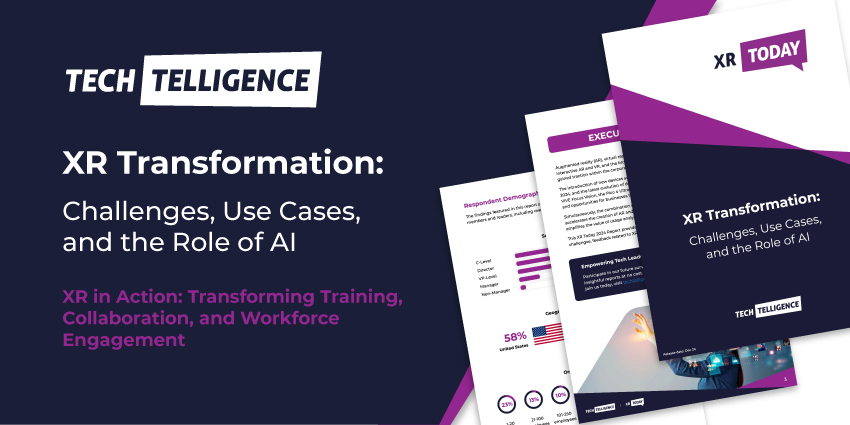Extended Reality is revolutionizing training and collaboration—two cornerstones of modern business success. Powered by technologies like Augmented Reality (AR), Virtual Reality (VR), and Mixed Reality (MR), XR is enabling organizations to reimagine how they cultivate skills, enhance teamwork, and engage their workforce.
Our latest report, XR Transformation: Challenges, Use Cases, and the Role of AI, explores how XR is helping organizations elevate productivity and foster meaningful, immersive interactions among employees.
→ Download the Report Here!
Crucial XR Tools and Use Cases
The report highlights the primary areas where XR is making a significant impact:
- Training (36%): XR’s ability to create immersive learning environments allows employees to engage in hands-on training. From replicating real-world safety scenarios to operating advanced machinery, XR enhances skill acquisition across various sectors.
- Collaboration (30%): Virtual environments driven by XR enable seamless real-time teamwork, bridging physical distances. By emulating face-to-face interactions, these tools enrich decision-making processes and foster better communication.
- Customer Experience (26%): XR redefines client engagement through innovative solutions such as virtual product demonstrations and interactive shopping platforms.
Emerging use cases, such as digital twins, onboarding programs, and remote expert assistance, underscore XR’s versatility and its potential to revolutionize workflows.
Maximizing Productivity and Engagement
Organizations utilizing XR are reaping substantial rewards:
- Enhanced Productivity (36%): XR streamlines operations, reduces redundant tasks, and enables employees to focus on strategic objectives. For example, virtual training minimizes travel needs while delivering high-quality, consistent experiences.
- Improved Employee Engagement (32%): The immersive nature of XR fosters a more interactive and meaningful work experience, enhancing job satisfaction and information retention.
Collaboration platforms powered by XR help distributed teams function cohesively. Whether brainstorming in virtual rooms or conducting design reviews, these tools amplify creativity and innovation.
Addressing Key Challenges
Despite XR’s benefits, challenges remain, including:
- Technical Complexity (34%): Organizations face hurdles like infrastructure needs and skill gaps. Solutions must focus on intuitive platforms with robust support systems.
- Cost Concerns (38%): The financial investment required for XR hardware and software can be prohibitive, necessitating clear ROI examples to justify expenses.
The Future of XR Collaboration
AI integration will significantly enhance XR applications in training and collaboration. Personalized learning modules, data-driven team analytics, and improved scalability are just a few advancements AI brings to XR technologies.
Download the full report to uncover how XR is transforming training, engagement, and collaboration across industries.







